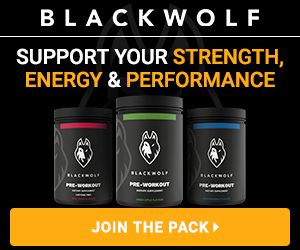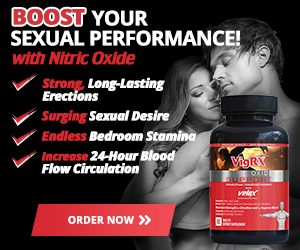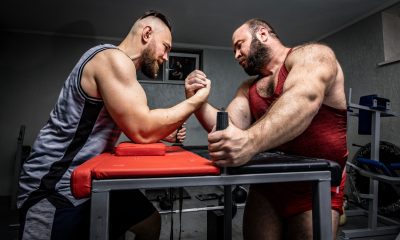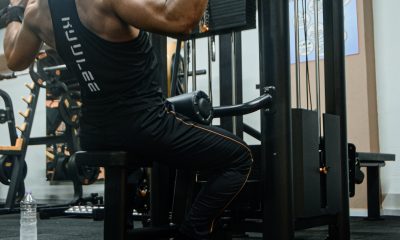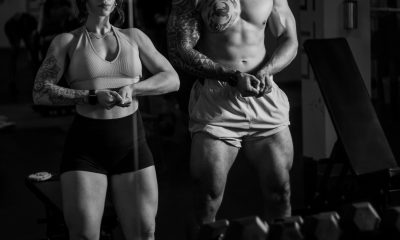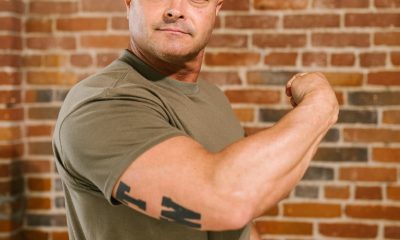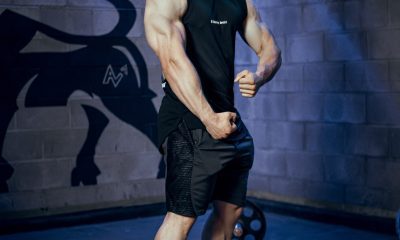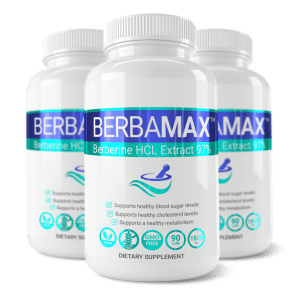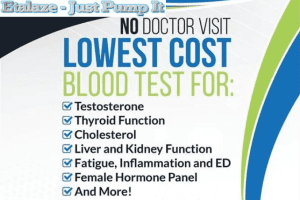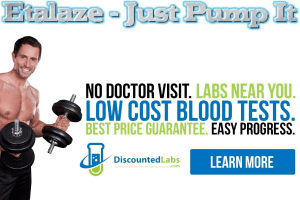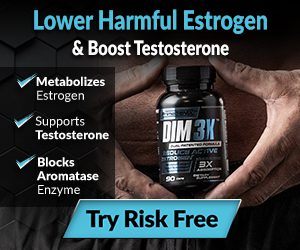Steroids
How Growth Hormone Therapy Enhances Recovery of Patients with Spinal Damage
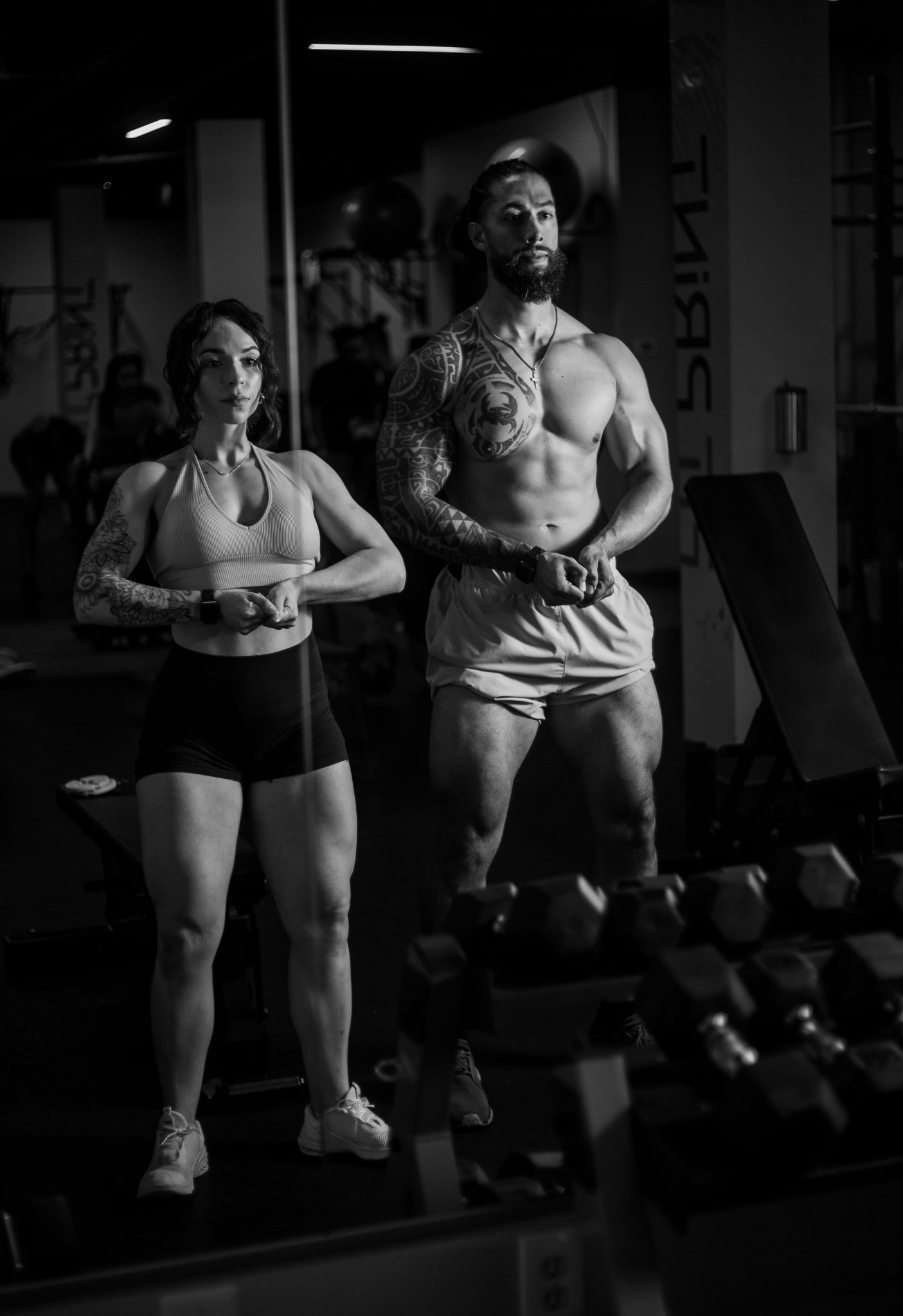
Researchers have found that combining human growth hormone and physical therapy helps people with severe spinal damage recover faster. The results of the study presented to the European Endocrinology Society show that daily treatment with GH produced significant positive changes in sensory functions of the spinal structure. GH triggers the production of a chemical by the pituitary gland, which helps regenerate new nerves. Although the findings are inconclusive, there is overwhelming evidence that this method could be used to treat people with the condition fully. This article will discuss the efficiency of Growth Hormone Therapy in managing various types of spinal injury.
About Severe Spinal Injury
Spinal injury results from a series of interferences of parts of the nervous system. Denervation, which is the loss of nerve activity in the affected region’, is the most obvious sign that the injury is severe and thus can be described as traumatic. Once the human muscle loses some nerve components, such as endplates and myofibrils, its atrophy changes significantly. Atrophy increases with the denervation level, eventually rendering one virtually immobile.
It is important to note that prolonged spinal injuries are harder to reverse because reinnervation becomes difficult. Even in the case of growth hormone therapy, the procedure's success depends on the length of the period before intervention. That is to say that the sooner a spinal injury is addressed using any medically approved method, the better. The process of axonal generation, which is essential in maintaining a healthy spine, is greatly affected by the affected nerve’s inability to secrete neurotrophic chemicals. The lack of neurotrophic chemicals weakens the burner bands, further complicating recovery from traumatic spinal damage.
Related Article: Human Growth Hormone Role In Bodybuilding
Axonal Regeneration
Axonal regeneration is the only sure way of treating spinal injury. Several therapies have been proposed and experimented with to fix the condition, but the results have not been satisfactory. Most of the methods tested have only managed to accelerate axonal generation have only done so to a certain level. However, scientists and physicians are still conducting more experiments to find a method to help regenerate these important elements to the desired level.
Efficacy of Growth Hormone (HG) in Nerve Regeneration
Among all therapeutic methods tested so far, injection with the growth hormone has been found to have greater success in increasing nerve regeneration for patients with spinal injury. Naturally, the growth hormone is produced by the pituitary gland. However, the body’s ability to produce the hormone may be hindered by factors such as old age, poor diet, or injury. As mentioned earlier, the hormone plays an important role in nerve regeneration. Therefore, its levels can be boosted by administering a synthetic growth hormone.
Additionally, people who have suffered from traumatic spinal injury tend to produce an amount of hormones below normal levels. This phenomenon is quite strange, and scientists continue to try to find the reason behind it. Nevertheless, patients with this problem can be injected with synthetic growth hormone to cater to the deficit. In addition to increasing GH to the required levels, the treatment enhanced nerve regeneration to maintain denervated muscles in patients with compromised nerves.
>> HUMAN GROWTH HORMONE <<
The Research
18 patients with traumatic spinal injury were subjected to a study over six months. The growth hormone level in 13 patients was below normal, a condition known as Growth Hormone Deficiency (GHD). The patients were injected with one dose of artificial growth hormone daily for six months to correct this deficiency. Their recovery process was monitored after the first three months. The patients were also categorized according to age, body mass index (BMI), and waist circumference.
This was necessary because the natural production of the growth hormone varies with the parameters above. As mentioned, the patients also underwent physical therapy sessions to achieve better results. To assess the recovery of the patients, researchers performed simple motor and spinal injury tests. It was established that patients who got a growth hormone injection showed great improvements within three months of treatment. By the sixth month, most patients were fully cured of their spinal injuries.
Lewis rats were put into four groups in similar research to be examined. The first group was a negative control; the other three were subjected to various tests.
- Subjected to chronic denervation for eight weeks, followed by nerve transfer (ulnar-to-median).
- Underwent denervation for 8 weeks and treated with 0.6g/day of purified GH alongside Ulnawr-to-median nerve transfer.
- They did not undergo chronic denervation but were subjected to ulnar-to-median nerve transfer.
- Served as the baseline and was used for naïve controls.
Tested Parameters
The four groups were subjected to grip tests weekly for fourteen weeks. Among the parameters being tested in the experiment include:
- Median nerve regeneration.
- Neuromuscular junction reinnervation.
- Flexor digitorum superficialis atrophy.
The test results showed that animals injected with the growth hormone showed greater improvements in median nerve regeneration. Nerve regeneration was measured using the Axon density, diameter, and myelin thickness. Additionally, the experiment revealed that the animals treated with GH showed significant recovery of motor function.
In summary, researchers found out the following from the two tests:
1 Growth hormone enhances axon regeneration.
2 Growth hormone therapy helps maintain chronically deserved muscles.
3 Growth promotes motor reinnervation.
4 Growth hormone enhances functional recovery.
Cumulatively, the effects of the growth hormone help people with severe spinal injuries recover faster. However, the treatment is most helpful when combined with other forms of treatment.
More Research Needed
Although the experiments above have shown the efficacy of the growth hormone in spinal damage treatment, the strategy is still under scientific scrutiny. The results above cannot be relied on fully due to several factors. For instance, the experiment conducted using Lewis rats cannot be used to tell what would happen in the case of humans. The sample size was too small to give conclusive and reliable results. These are only preliminary results but indicate hope for the near future.
Until this study, it was widely believed that damaged axons cannot be repaired in the medical world. If this treatment method is approved, it will be a major game-changer in the medical world. Patients with traumatic spinal injury will no longer feel condemned to the wheelchair forever, thanks to the muscle-maintaining abilities of the growth hormone.
Alternative Therapeutic Treatments
As mentioned earlier, various methods have been tested to determine their efficacy in treating or managing severe spinal injuries. Growth hormone therapy is only one of the several methods still being studied regarding the condition. However, it is important to note that the nature of treatment depends on the severity of the condition. Severe cases of the condition can be managed through surgery and assistive devices that enable affected people to live normal lives without depending on others entirely. Here are some alternative treatments for the condition.
Immobilization
This method stabilizes the spine by bringing it into proper alignment. This is done using various equipment, such as a special bed or a rigid collar.
Surgery –
Spinal surgery is a treatment method to remove bone fragments and other unwanted materials in the injured area. The method also stabilizes the spine and prevents deformities arising from the injury.
Hydrotherapy –
In cases where the patient experiences a lot of pain, water is used to relieve the pain. That can be done by soaking in a hot tub or mineral bath.
Intravenous IV Methylprednisolone Treatment –
This is the most potent non-surgical treatment method for the condition ever found. The treatment is exclusively designed for mild spinal injuries that do not need surgery. However, the chemical has been found to have severe side effects on the patient, such as pneumonia and blood clotting. For this reason, the treatment has been largely stopped.
Rehabilitation –
Although technically not a treatment method, rehabilitation has helped people recovering from spinal injuries face the journey. A team of professionals such as dietitians, physical therapists, and rehabilitation nurses usually care for the patient in the early stages of recovery.
Electrical Stimulation Devices
Sometimes, people with severe spinal injuries cannot move their arms and legs. However, with special electrical stimulation devices, people can easily stand, walk, and grip objects.
Conclusion
Enhances Recovery of Patients with Spinal DamageTraumatic spinal injury happens to many people around the globe annually through accidents and bodily complications. Given the sensitivity of the spinal structure, surgery is never an easy option, hence the need to try safer methods such as growth hormone therapy. As mentioned, treatment with GH has not been fully approved, but it can be used in the meantime. The best thing about this method is that it doesn’t have nasty side effects.
Bodybuilding Products
Telmisartan In Bodybuilding: An Expert’s Advice
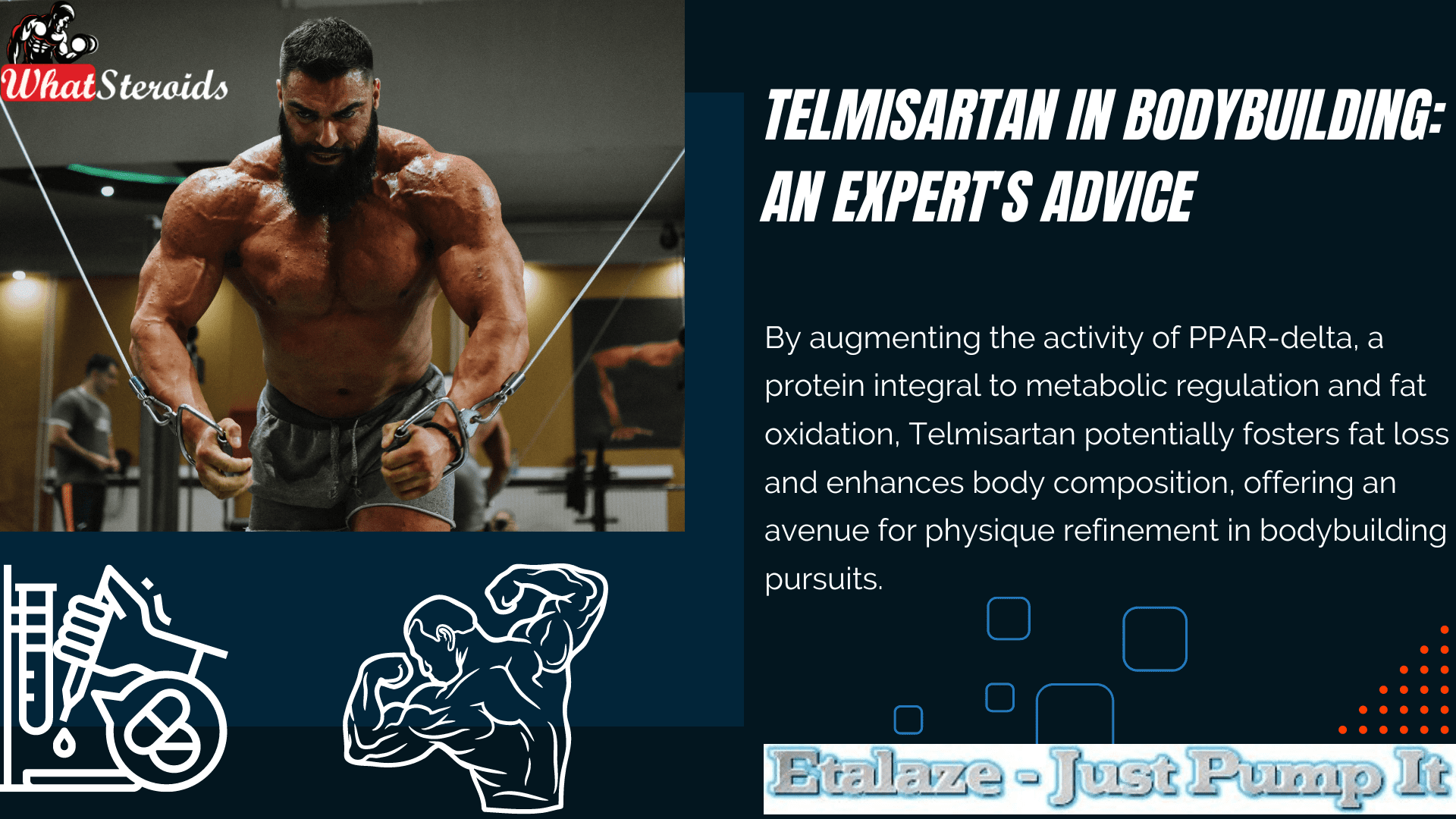
Telmisartan is a medication primarily used in medical circles to treat hypertension, also known as high blood pressure. It belongs to a class of drugs called angiotensin II receptor blockers (ARBs). The drug has piqued the interest of bodybuilders due to its potential benefits beyond blood pressure management.
Mechanism of Action
Telmisartan works by blocking the action of angiotensin II, a substance in the body that causes blood vessels to constrict, thereby reducing blood pressure. By blocking angiotensin II receptors, telmisartan dilates blood vessels, allowing blood to flow more smoothly.
Medical Application of Telmisartan
Treatment of Hypertension
Hypertension is a common medical condition characterized by elevated blood pressure levels. It is a significant risk factor for various cardiovascular diseases, including heart attack and stroke. The drug is prescribed to patients with hypertension to help lower their blood pressure and reduce the risk of associated complications.
Cardiovascular Protection
Telmisartan not only helps lower blood pressure but also provides cardiovascular protection. It has been shown to reduce the risk of heart attack, stroke, and other cardiovascular events in patients with hypertension or other cardiovascular risk factors.
Diabetic Nephropathy
In addition to treating hypertension, telmisartan is also used in the management of diabetic nephropathy, a type of kidney disease that occurs in people with diabetes. It helps slow down the progression of kidney damage in diabetic patients by reducing blood pressure and protecting the kidneys from further damage.
Heart Failure
Telmisartan may also be prescribed in the treatment of heart failure, a condition in which the heart is unable to pump blood effectively to meet the body's needs. It can help improve symptoms, reduce hospitalizations, and increase survival rates in patients with heart failure, particularly those who cannot tolerate other medications such as ACE inhibitors.
Combination Therapy
The drug is sometimes used in combination with other antihypertensive medications, such as diuretics or calcium channel blockers, to achieve better blood pressure control. Combination therapy is often recommended when blood pressure is difficult to control with a single medication alone.
Read More: 12 Muscle Supplements that a Skinny Guy Should Take
Long-Lasting Effects
One notable feature of telmisartan is its long duration of action, with a half-life of around 24 hours. This means that it can be taken once daily, making it convenient for patients and potentially improving medication adherence.
Telmisartan Use In Bodybuilding
The use of Telmisartan within bodybuilding holds multifaceted advantages. Its diverse benefits offer significant potential for bodybuilders seeking enhanced performance.
Initially, the antihypertensive attributes of The drug serve as a vital adjunct in managing and preventing elevated blood pressure induced by AAS (Anabolic Androgenic Steroids). Additionally, Telmisartan exhibits efficacy in mitigating cardiac hypertrophy, particularly left ventricular hypertrophy, a prevalent concern among enhanced bodybuilders, which is often linked to premature mortality.
Moreover, Telmisartan's favorable impact on insulin sensitivity presents a counterbalance against the insulin resistance commonly associated with substances like MK-677, GH, and GH-releasing peptides.
Furthermore, Telmisartan demonstrates anti-inflammatory properties, facilitating a reduction in C-Reactive Protein levels, thereby addressing a significant factor in cardiovascular disease risk among bodybuilders.
Yet, the scope of Telmisartan's benefits extends further. By augmenting the activity of PPAR-delta, a protein integral to metabolic regulation and fat oxidation, Telmisartan potentially fosters fat loss and enhances body composition, offering an avenue for physique refinement in bodybuilding pursuits.
Here a few take aways on the application of the drug in bodybuilding:
Increased Endurance
Some users claim that Telmisartan enhances endurance levels.
Athletes may experience longer and more intense workout sessions without premature fatigue.
Improved Muscle Recovery
Telmisartan’s positive impact on blood flow may aid in post-workout muscle recovery.
It delivers essential nutrients and oxygen to muscles more efficiently.
Anti-Inflammatory Effects
The medication’s anti-inflammatory properties could reduce exercise-induced muscle soreness and inflammation.
Faster recovery between training sessions may be possible.
Fat Loss
Anecdotal reports suggest that Telmisartan may promote fat loss.
It could enhance the body’s ability to burn stored fat.
Muscle Hypertrophy
Some users speculate that Telmisartan might positively influence muscle growth.
This could be attributed to its impact on blood flow and nutrient delivery to muscle tissues.
Optimal Dosage for Bodybuilders
While Telmisartan is prescribed for specific medical conditions at varying dosages, the dosage used by bodybuilders may differ.
Scientific literature on Telmisartan’s direct impact on bodybuilding is limited.
Most information is based on user experiences and anecdotal evidence.
Generally, dosages for bodybuilders range from 20 to 80 milligrams (mg) per day, with some users dividing the daily intake into two doses.
Telmisartan Side Effects and Precautions
Telmisartan, like any medication, can have side effects and precautions that users should be aware of.
Side Effects
Dizziness or lightheadedness: The drug can cause dizziness or a feeling of faintness, especially when rising from a sitting or lying position.
Hypotension: Some individuals may experience a significant drop in blood pressure, leading to symptoms such as weakness, fatigue, or fainting.
Hyperkalemia: Telmisartan may lead to elevated levels of potassium in the blood, which can cause symptoms like muscle weakness, irregular heartbeat, or tingling sensations.
Fatigue: Feeling tired or lethargic is a common side effect of Telmisartan.
Headache: Some users may experience headaches as a side effect of the medication.
Diarrhea: Telmisartan can occasionally cause diarrhea or other gastrointestinal disturbances.
Back pain: Back pain has been reported as a side effect in some individuals taking Telmisartan.
Upper respiratory tract infection: Users may experience symptoms of a cold or flu-like illness.
Sinusitis: Inflammation of the sinuses may occur in some individuals.
Muscle cramps: Telmisartan can sometimes cause muscle cramps or spasms.
Allergic reactions: Rarely, individuals may experience allergic reactions such as rash, itching, swelling, or difficulty breathing.
Precautions
Pregnancy: Telmisartan should not be used during pregnancy due to the risk of harm to the fetus.
Breastfeeding: It is not recommended to use Telmisartan while breastfeeding, as it may pass into breast milk and harm the nursing infant.
Kidney disease: Caution should be exercised in individuals with kidney disease, as Telmisartan can affect kidney function.
Liver disease: Patients with liver impairment may require dose adjustments or close monitoring while taking Telmisartan.
Heart conditions: Individuals with heart disease, heart failure, or a history of heart attacks should use Telmisartan with caution under the supervision of a healthcare professional.
Diabetes: Telmisartan may affect blood sugar levels, requiring adjustments in diabetes medications.
Salt/volume depletion: Telmisartan may cause excessive lowering of blood pressure in individuals with salt or volume depletion.
Hyperkalemia: Patients with conditions predisposing them to hyperkalemia should be closely monitored while taking Telmisartan.
Renal artery stenosis: Telmisartan may exacerbate renal artery stenosis, a narrowing of the arteries that supply blood to the kidneys.
Dual blockade of the renin-angiotensin system: Concurrent use of Telmisartan with other medications that affect the renin-angiotensin system may increase the risk of hypotension, hyperkalemia, and renal impairment.
Driving and operating machinery: The drug may cause dizziness or fatigue, which can impair the ability to drive or operate machinery.
Where to Buy Telmisartan Online
Telmisartan is available through various channels. Here are some options for obtaining Telmisartan:
Local Pharmacies
You can visit local pharmacies such as Walgreens, CVS Pharmacy, Walmart, Harris Teeter, or Target (CVS). Prices may vary, but the drug typically starts at $10.751.
Some pharmacies offer home delivery services, allowing you to order online and have the medication delivered to your doorstep.
Online Prescription Services
Sesame: You can book a same-day video appointment with a healthcare provider on Sesame. They can write a prescription for Telmisartan, and you can pick it up at a local pharmacy.
Push Health: While Telmisartan is a prescription medication, you can consult with a medical provider online through Push Health to obtain a prescription.
Related Article: 6 Best Ways to Verify If a Steroid is Fake
Online Pharmacies
BuyMicardPl: This online platform offers Telmisartan (generic Micardis) without a prescription4.
PharmacyPortal: Check their catalog for Telmisartan availability.
Always consult with a healthcare professional before starting any new medication, especially if you have specific health conditions or are taking other medications. They can guide you on the appropriate dosage and monitor your progress.
Telmisartan Alternatives
While The drug has gained attention among bodybuilders, it’s essential to explore alternative options. Here are some medications that may have similar effects or benefits:
Lisinopril (Prinivil, Zestril)
An angiotensin-converting enzyme (ACE) inhibitor, lisinopril helps lower blood pressure and may have a calming effect on nerves and the heart12. It’s commonly used for hypertension.
Losartan (Cozaar)
Another angiotensin II receptor blocker (ARB) like Telmisartan, losartan can help manage blood pressure and has potential benefits beyond that3.
Olmesartan (Benicar)
Also an ARB, olmesartan is used for hypertension and may have similar effects on blood flow and muscle recovery4.
Valsartan (Diovan)
Yet another ARB, valsartan is prescribed for high blood pressure and could be considered as an alternative4.
Metoprolol (Lopressor)
A beta-blocker, metoprolol can reduce heart rate and blood pressure. It’s sometimes used off-label for social anxiety and movement disorders52.
Propranolol (Inderal)
Another beta-blocker, propranolol may help with anxiety and tremors. It’s used in various contexts, including performance anxiety5.
Candesartan
An ARB similar to Telmisartan, candesartan may have comparable effects on blood pressure and muscle function.
Irbesartan
Yet another ARB, irbesartan could be considered as an alternative for bodybuilders.
Fosinopril
An ACE inhibitor, fosinopril might have similar effects on blood pressure and overall health.
Nebivolol
A unique beta-blocker with vasodilating properties, nebivolol could be explored as an alternative2.
Overall
In conclusion, while some individuals may speculate about the potential benefits of Telmisartan in bodybuilding due to its purported effects on blood pressure regulation and muscle function, it's essential to emphasize that using Telmisartan for bodybuilding purposes is not medically advised or supported.
Telmisartan is a medication prescribed for managing high blood pressure and reducing the risk of cardiovascular events, and its off-label use for bodybuilding carries significant risks and potential side effects. Engaging in such usage without medical supervision can lead to adverse health outcomes and complications.
Therefore, individuals interested in bodybuilding should prioritize safe and evidence-based approaches, consulting with healthcare professionals and adhering to established guidelines for training, nutrition, and supplementation.
Must Read: Tren Cycle for Beginners
Bodybuilding
Is My Gear Bunk? How to Deal With Underwhelming Results
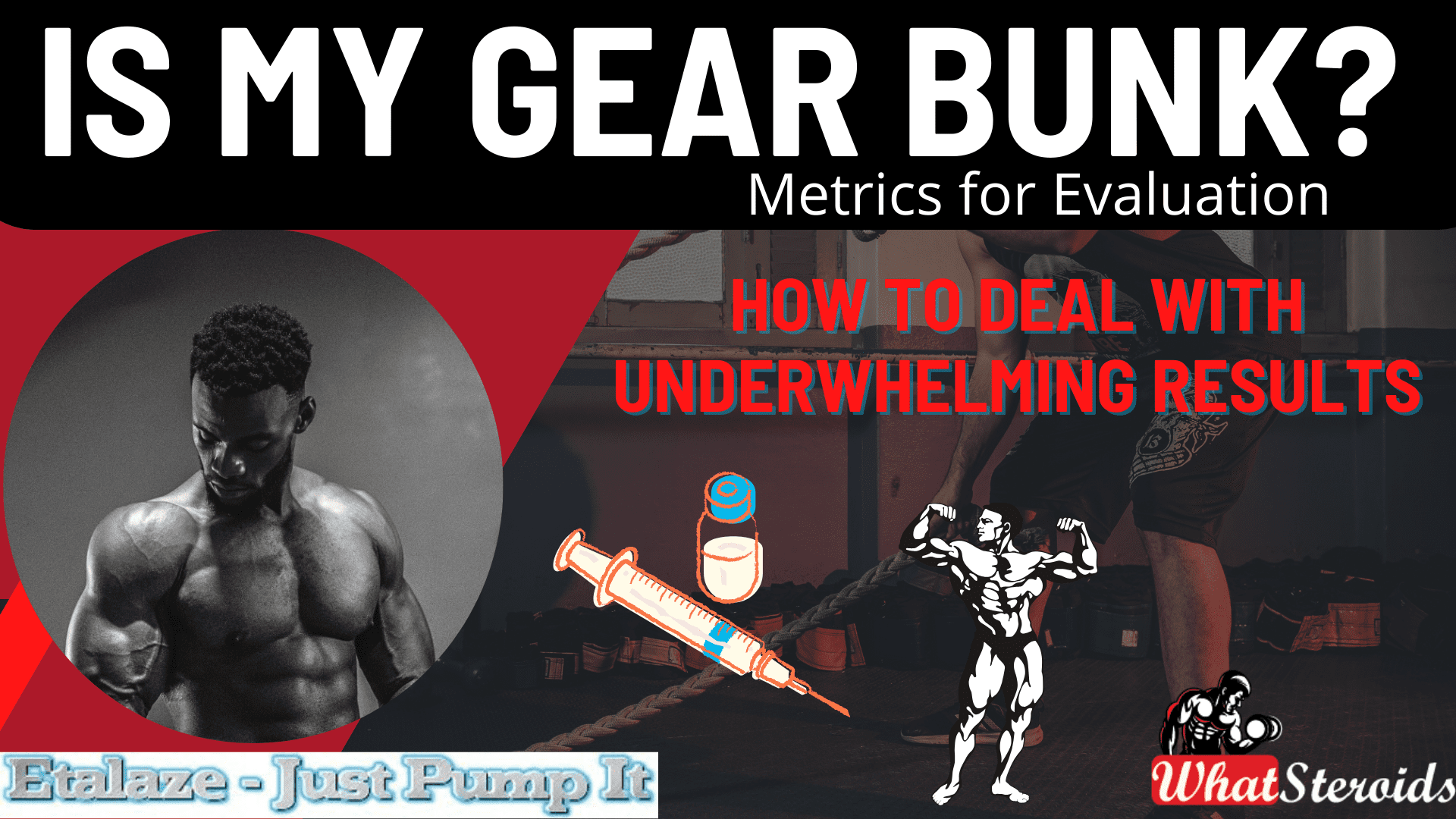
The concern about whether one’s gear is “bunk” or ineffective is indeed a common one in bodybuilding forums. When results don’t meet expectations, it’s natural to question the quality of the supplements or steroids being used.
Training and Diet
Are the training regimen and diet optimized for the goals? Consistency and intensity in workouts, along with a diet rich in protein and other nutrients, are crucial for muscle gains.
Rest and Recovery
Muscles need time to repair and grow after workouts. Adequate sleep and rest days are essential.
Realistic Expectations
It’s important to set achievable goals. Unrealistic expectations can lead to disappointment, regardless of the gear’s quality.
Proper Dosage and Cycle
Ensuring that the gear is used in the correct dosage and cycle length is important for effectiveness.
Metrics for Evaluation
Are the right metrics being used to assess progress? Muscle gains can be slow and incremental, and focusing solely on the scale might not reflect true progress.
Quality and Authenticity
Finally, if all other factors are in place, it might be worth verifying the authenticity and quality of the gear.
PEDs Awareness
Understanding the types of PEDs, their effects, and the risks involved is crucial. PEDs can range from anabolic steroids to hormone supplements like HGH1.
Injectable Hormones
Injectable hormones such as testosterone and human growth hormone (HGH) are commonly used in bodybuilding. They can lead to significant muscle growth but also come with risks such as hormonal imbalances and organ damage23.
Steroid Doses
The dosage of steroids must be carefully managed. Excessive doses can lead to severe side effects, while too little may not provide the desired muscle growth4.
Cycle Length
The duration of a steroid cycle should be planned according to individual goals and the body’s response to the steroids.
Also See: Top 10 best Immune Boosting Supplements to buy in 2024
Post-Cycle Therapy (PCT)
After a steroid cycle, PCT is essential to help the body recover and maintain the gains made.
Legal Implications
The legality of steroid use varies by country, and it’s important to be aware of the laws to avoid legal repercussions.
Ethical Considerations
The use of PEDs raises ethical questions about fairness in competition and the integrity of the sport.
Health Monitoring
Regular health check-ups are necessary to monitor the effects of PEDs on the body.
Mental Health
The psychological impact of PEDs, including dependency and body image issues, should not be overlooked.
Nutritional Support
A diet that supports the increased metabolic demands of bodybuilding and PED use is vital.
Supplement Quality
Ensuring the quality and purity of PEDs and supplements is important to avoid contaminants that could cause harm.
Training Adaptation
The training regimen may need to be adjusted when using PEDs to optimize results and minimize injuries.
Peer Influence
Be cautious of advice from fellow athletes or online forums; not all sources are reliable or have your best interests in mind.
Long-Term Consequences
Consider the potential long-term health consequences of PED use, which can include cardiovascular issues, infertility, and other endocrine disorders.
Metrics to Evaluate These Parameters
Evaluating the legitimacy and effectiveness of bodybuilding gear involves a multifaceted approach. Here are metrics that can be used to measure each of the 20 parameters above.
Training and Diet
Track workout progress, dietary adherence, and macronutrient intake.
Rest and Recovery
Monitor sleep quality and quantity, as well as muscle soreness and recovery rate.
Realistic Expectations
Set and review short-term and long-term bodybuilding goals.
Proper Dosage and Cycle
Log dosages and cycle lengths, and compare them with recommended guidelines.
Metrics for Evaluation
Use body composition analysis, such as DEXA scans or calipers, to measure fat and muscle changes.
Quality and Authenticity
Verify product labels and third-party testing for substance authenticity.
PEDs Awareness
Educate oneself on PED types and effects through credible sources.
Injectable Hormones
Blood tests to monitor hormone levels and ensure they are within safe ranges.
Steroid Doses
Record and adjust dosages based on physiological responses and side effects.
Cycle Length
Plan and document cycle durations, noting any physiological changes.
Post-Cycle Therapy (PCT)
Assess hormonal balance and recovery post-cycle with blood tests.
Legal Implications
Stay informed about local laws regarding PED use.
Ethical Considerations
Reflect on personal ethics and the impact of PED use on competitive fairness.
Health Monitoring
Regular health screenings, including liver and kidney function tests.
Mental Health
Self-assessments or professional evaluations for mental well-being.
Nutritional Support
Nutritional logs and periodic reviews with a dietitian.
Supplement Quality
Check for certifications like NSF or Informed-Choice on supplements.
Training Adaptation
Adjust training programs based on performance metrics and recovery.
Peer Influence
Critically evaluate advice from peers against scientific evidence.
Long-Term Consequences
Longitudinal health tracking to identify potential delayed effects of PED use.
Optimizing Calorie Intake: A Key Strategy to Manage Weight Effectively
When it comes to bodybuilding, one of the crucial factors that can significantly impact your progress is your calorie intake. Whether you are looking to build muscle mass, lose fat, or maintain your current weight, understanding and optimizing your calorie consumption is essential. In this article, we will explore the recommended calorie intake for bodybuilders and how it can help mitigate abnormal weight fluctuations.
Why Calorie Intake Matters for Bodybuilders
Calories are units of energy that our bodies need to function properly. For bodybuilders, caloric intake plays a vital role in achieving their fitness goals. Consuming the right amount of calories ensures that you have enough energy for workouts, muscle recovery, and overall performance.
Determining Your Calorie Needs
The recommended daily calorie intake for bodybuilders varies depending on various factors such as age, gender, weight, height, activity level, and fitness goals. To determine your specific calorie needs accurately, consider using online calculators or consulting with a nutritionist or dietitian.
Recommended Calorie Intake for Bodybuilders
As a general guideline, bodybuilders aiming to build muscle mass often follow a caloric surplus diet where they consume more calories than they burn. This surplus provides the extra energy needed for muscle growth and repair. On the other hand, those looking to lose fat may opt for a caloric deficit diet where they consume fewer calories than they burn to promote fat loss while preserving muscle mass.
Mitigating Abnormal Weight Fluctuations
To mitigate abnormal weight fluctuations as a bodybuilder, it is crucial to monitor your calorie intake consistently and adjust it based on your progress and goals. Rapid changes in weight can indicate an imbalance between calorie consumption and expenditure.
Incorporating Nutrient-Dense Foods
Apart from monitoring calorie intake, focusing on nutrient-dense foods is essential for overall health and optimal performance. Include a variety of protein sources, complex carbohydrates, healthy fats, fruits, and vegetables in your diet to ensure you meet all your nutritional requirements.
Must Read: What Anabolic Steroids Can Be Used for Joint or Ligament Injuries
Top Legit Steroid Pharmaceuticals for Bodybuilders: Where to Find Effective Gear
When it comes to bodybuilding, finding legitimate steroid pharmaceuticals that provide effective gear is crucial for achieving desired results safely and efficiently. Not all suppliers can be trusted, so it's important for bodybuilders to do their research and only purchase from reputable sources. Here are some top pharmaceutical companies known for selling high-quality, effective gear.
1. Alpha Pharma Gear Suppliers
One of the top pharmaceuticals globally, Alpha Pharma is a well-known pharmaceutical company that offers a range of steroids specifically designed for bodybuilding purposes. They are known for their quality products and have gained trust among many bodybuilders worldwide.
2. Dragon Pharma
Dragon Pharma is another popular choice among bodybuilders looking for reliable steroid products. They are known for their commitment to quality and effectiveness in helping athletes achieve their fitness goals.
3. Balkan Pharmaceuticals
It is a trusted name in the world of bodybuilding supplements, offering a variety of steroids that are known for their potency and reliability.
4. Kalpa Pharmaceuticals
This outlet is recognized for its high-quality gear that caters to the needs of bodybuilders seeking safe and effective performance-enhancing drugs.
5. Geneza Pharmaceuticals
Geneza is a reputable supplier of steroids that are widely used by bodybuilders due to their effectiveness and quality standards.When purchasing steroids from pharmaceutical companies, it's essential to ensure they are legit and follow proper guidelines for safety and authenticity. Always verify the credentials of the supplier before making a purchase, prioritize quality over price, and consult with healthcare professionals if needed.
Bonus: Etalaze Shops - Your Ultimate Online Gear Store
Looking to elevate your bodybuilding game with top-notch supplements and legit steroids? Look no further than Etalaze shop - the ultimate destination for bodybuilders seeking high-quality products at competitive prices.
At Etalaze, you'll find a wide range of legal steroids and human growth hormones to help you achieve your fitness goals effectively. With discounts and deals regularly offered, shopping online at Etalaze ensures convenience and affordability without compromising on product quality.
Whether you're a seasoned bodybuilder or just starting out on your fitness journey, Etalaze has the products to support your needs. From muscle building to cutting cycles, their selection caters to various preferences and requirements, making it a one-stop shop for all your supplement needs.
Don't settle for anything less than the best when it comes to enhancing your performance and physique. Choose Etalaze as your go-to store for legal steroids and experience the difference in quality and results that set them apart as the ultimate destination for bodybuilders worldwide.
Overall
In conclusion, navigating the world of cycles and PEDs in bodybuilding can be fraught with uncertainties. While concerns about the quality and effectiveness of gear are valid, it's crucial for pro bodybuilders to approach the situation with a combination of skepticism and proactive measures. By educating themselves on authentication methods, seeking reputable sources for gear, and prioritizing holistic approaches to training and nutrition, athletes can better manage the risks associated with potentially bunk gear.
Ultimately, by focusing on consistency, dedication, and a commitment to your cycling needs, one can overcome the setbacks we've discussed and strive for success, regardless of the challenges you may face along the way. Good luck in your cycling journey!
Related Article: The Ultimate Guide to Safe Steroid Injection
Bodybuilding
How Much Is Too Much Cardio? Understanding Heart Rate Zones
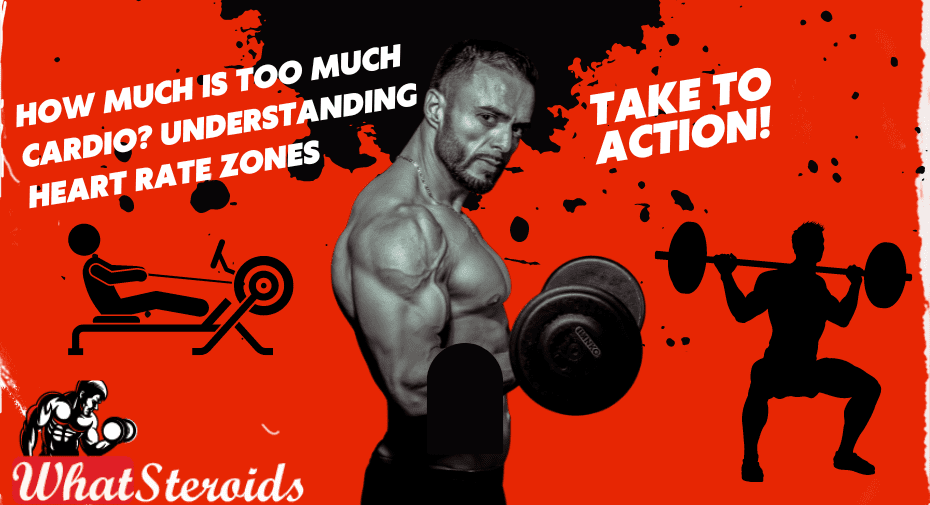
The relationship between cardio and heart rate zones for bodybuilders revolves around optimizing cardiovascular health, improving metabolic efficiency, and supporting overall conditioning while minimizing interference with muscle growth and strength development.
By strategically incorporating cardio workouts within different heart rate zones, bodybuilders can achieve a balanced approach to fitness that enhances both cardiovascular performance and muscular development, ultimately leading to a well-rounded and resilient physique.
Related Article: Emotional Effects of Steroids
Heart rate zones are ranges that indicate different levels of exercise intensity based on your maximum heart rate. Here’s a guide to understanding heart rate zones:
Zone 1 (50-60% of max HR)
This is a very comfortable effort used for warm-ups.
Zone 2 (60-70% of max HR)
This is considered a fat-burning zone. It’s a comfortable effort used for endurance training.
Zone 3 (70-80% of max HR)
This zone improves aerobic capacity and endurance.
Zone 4 (80-90% of max HR)
This zone increases anaerobic capacity and threshold.
Zone 5 (90-100% of max HR)
This is the maximum effort zone, improving speed and power.
Your maximum heart rate is roughly calculated as ( 220 - \text{your age} ). For example, if you’re 30 years old, your estimated maximum heart rate would be ( 220 - 30 = 190 ) beats per minute (bpm).
Remember, these figures are averages and can vary based on individual fitness levels, health status, and other factors.
These Gear Could Help Monitor Your Heart Rate
For bodybuilders and athletes looking to monitor their heart rate, there are several types of heart rate monitors that can be suitable:
Chest Strap Monitors
These provide the most accurate readings and are ideal for continuous monitoring during workouts. The Polar H10 and Garmin HRM-Pro Plus are highly recommended.
Armband Monitors
These are comfortable for longer workouts and are less constricting than chest straps. The MyZone MZ-Switch and Wahoo Fitness Tickr Fit are popular choices.
Wristband Monitors
These are less accurate than chest straps but are more convenient for all-day wear. The Fitbit Versa 4 and Google Pixel Watch are options that also offer additional fitness tracking features.
Each type has its pros and cons, so it’s important to choose one that fits your specific needs and comfort preferences.
It’s also worth noting that while wristband monitors are more convenient, they may not always provide the accuracy required for intense bodybuilding workouts where precision is key.
Always ensure that the device you choose is compatible with any other fitness tracking systems you use.
Cardio Do's and Don'ts
To avoid focusing too much on cardio and neglecting heart rate zones, we recommend these tips:
- Set clear goals: Define your fitness objectives, whether it's building muscle, improving endurance, or enhancing overall health. This will help you prioritize your training methods accordingly.
- Consult a fitness professional: Work with a personal trainer or exercise physiologist who can assess your individual needs and create a balanced workout plan tailored to your goals.
- Incorporate resistance training: Include strength training exercises in your routine to build muscle mass and improve strength. This can help you maintain a healthy balance between cardio and strength training.
- Monitor intensity: Pay attention to how your body feels during workouts and adjust the intensity accordingly. Utilize heart rate monitors or perceived exertion scales to ensure you're staying within your desired heart rate zones when doing cardio.
- Schedule cardio strategically: Plan your cardio sessions around your strength training workouts to avoid overemphasizing cardio. Consider incorporating high-intensity interval training (HIIT) or shorter, more intense cardio sessions to maximize efficiency.
- Prioritize recovery: Allow adequate time for rest and recovery between workouts to prevent burnout and overtraining. Recovery is essential for muscle growth and overall performance.
- Track progress: Keep track of your workouts and progress over time to ensure you're making balanced improvements in both cardiovascular fitness and strength.
Appropriate Diet for Each Zone
When it comes to diet for bodybuilders focusing on different heart rate zones, it's important to prioritize overall nutritional balance and meeting specific training goals rather than tailoring the diet solely based on heart rate zones. However, here's a general list of dietary recommendations for bodybuilders, including 10 supplements that can support their training:
| Protein: Essential for muscle repair and growth. Sources include lean meats, poultry, fish, eggs, dairy, tofu, legumes, and protein supplements like whey protein powder.
Carbohydrates: Provide energy for workouts and replenish glycogen stores. Opt for complex carbohydrates such as whole grains, fruits, vegetables, and legumes. Vegetables and Fruits: Rich in vitamins, minerals, and antioxidants for overall health and recovery. Aim for a variety of colorful fruits and vegetables to ensure a wide range of nutrients. |
Don't Miss: Anabolic Steroids Less Likely to Cause Acne
| Hydration: Stay well-hydrated to support performance and recovery. Drink plenty of water throughout the day, especially before, during, and after workouts.
Creatine: Helps increase muscle strength and power output during high-intensity exercise. Can be consumed through supplementation or found naturally in small amounts in meat and fish. Branched-Chain Amino Acids (BCAAs): Support muscle recovery and growth. Can be consumed through supplements or found in protein-rich foods like meat, dairy, and legumes. Beta-Alanine: Helps increase muscle endurance by buffering lactic acid buildup. Commonly found in pre-workout supplements or consumed separately. Glutamine: Supports immune function and muscle recovery. Can be taken as a supplement or found naturally in protein-rich foods like meat, dairy, and legumes. Omega-3 Fatty Acids: Have anti-inflammatory properties and support overall health. Found in fatty fish like salmon, as well as in fish oil supplements. |
It's important for new bodybuilders to focus on establishing a well-rounded diet that meets their energy needs and provides adequate nutrients to support their training and recovery.
Always consult with a healthcare professional or registered dietitian before starting any new supplement regimen to ensure safety and effectiveness, especially if you have any underlying health conditions or concerns.
Take Away
The question of "how much cardio is too much?" is one that requires a nuanced understanding of individual fitness goals, training intensity, and overall health status. By delving into the concept of heart rate zones, we can gain valuable insights into optimizing cardiovascular training while avoiding potential pitfalls of excessive cardio. Understanding the different heart rate zones, including the aerobic, anaerobic, and maximal zones, allows individuals to tailor their workouts to specific objectives, whether it's improving endurance, increasing aerobic capacity, or enhancing fat burning.
However, it's essential to recognize that more isn't always better when it comes to cardio training. Overdoing cardio can lead to diminishing returns, increased risk of injury, and potential negative impacts on muscle growth and strength development, especially for bodybuilders and other athletes focused on resistance training. Therefore, striking a balance between cardiovascular exercise and strength training is crucial for achieving well-rounded fitness and performance goals.
Moreover, the optimal amount of cardio varies greatly among individuals and depends on factors such as fitness level, training experience, age, and overall health status. It's essential to listen to your body, pay attention to signs of overtraining, and adjust your workout routine accordingly. Consulting with a fitness professional or healthcare provider can provide valuable guidance in determining the appropriate amount and intensity of cardio for your specific needs and goals.
Ultimately, finding the right balance between cardio and strength training, understanding your heart rate zones, and respecting your body's limits are key to achieving sustainable progress and maintaining long-term health and fitness. By approaching cardio training with mindfulness and moderation, individuals can harness its benefits while minimizing potential drawbacks, leading to a well-rounded and effective fitness regimen tailored to individual needs and aspirations.
Must Read: Best Steroid Cycles for Beginners
-
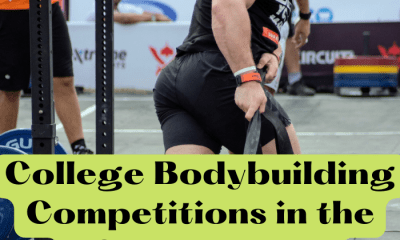
 Bodybuilding2 years ago
Bodybuilding2 years agoCollege Bodybuilding Competitions in the US and Europe
-

 Bodybuilding2 years ago
Bodybuilding2 years agoFootballers Who Started as Bodybuilders
-

 Bodybuilding2 years ago
Bodybuilding2 years agoOlympic Lifting : 25 Strategies That Work
-

 Bodybuilding2 years ago
Bodybuilding2 years ago10 Transgender Bodybuilders Who Are Killing It At the Gym
-

 Bodybuilding2 years ago
Bodybuilding2 years agoTraining clothing: Marvel-Inspired Clothing on Amazon in 2023
-

 Bodybuilding2 years ago
Bodybuilding2 years agoNew Arrival Workout Equipment on Amazon for The Disabled
-

 Steroids2 years ago
Steroids2 years agoSupplemental Breast Milk for Bodybuilders: The Secret Behind It
-

 Steroids2 years ago
Steroids2 years agoDwarf Bodybuilders Giving Pros A Run for Their Money
-
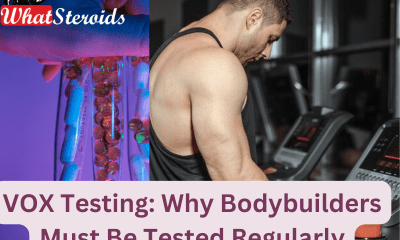
 Steroids1 year ago
Steroids1 year agoVOX Testing: Why Bodybuilders Must Have It Tested Regularly
-

 Steroids10 months ago
Steroids10 months agoShavers and Other Body Grooming Equipment for Bodybuilders In 2023
-

 Steroids10 months ago
Steroids10 months agoChatGPT and Other Avenues to Find Great Bodybuilding Coaches
-

 Steroids10 months ago
Steroids10 months agoBest Oil Recommendations Before Competition for Subtle Shimmer
-
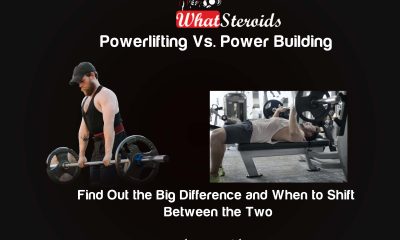
 Steroids10 months ago
Steroids10 months agoPowerlifting Vs Power Building: Find Out the Big Difference and When to Shift Between the Two
-
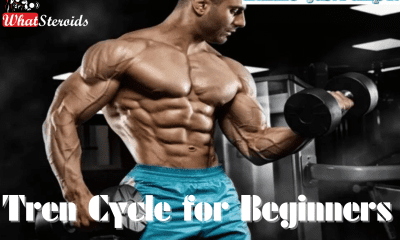
 Beginners8 months ago
Beginners8 months agoTren Cycle for Beginners
-
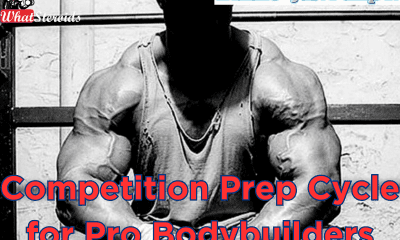
 Bodybuilding8 months ago
Bodybuilding8 months agoCompetition Prep Cycle for Pro Bodybuilders
-

 Nutrition6 months ago
Nutrition6 months agoEverything Nutritional Food: What’s Too Much Or Too Little
-
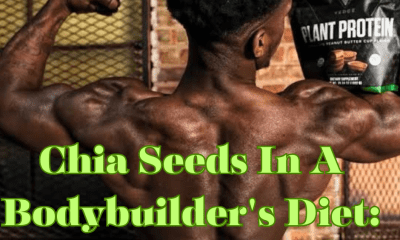
 Bodybuilding5 months ago
Bodybuilding5 months agoChia Seeds in A Bodybuilder’s Diet: An Expert’s Advice
-

 Bodybuilding4 months ago
Bodybuilding4 months agoUnique Things That Have Redefined Mr Olympia Over The Years
-

 Beginners6 months ago
Beginners6 months agoCalisthenics: Secret to Building A Better Upper and Middle Body
-

 Anabolic Steroids5 months ago
Anabolic Steroids5 months agoNatural Steroids for Bodybuilding
-

 Steroids4 months ago
Steroids4 months agoThese Bodybuilding Equipment Might Become Obsolete Next Year (See Alternative Upgrades)
-

 Anabolic Steroids3 months ago
Anabolic Steroids3 months agoStart The New Year Strong With These Tips
-
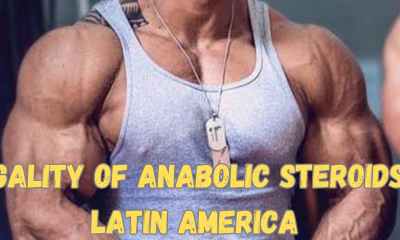
 Anabolic Steroids5 months ago
Anabolic Steroids5 months agoLegality of Anabolic Steroids In Latin America
-

 Bodybuilding3 months ago
Bodybuilding3 months agoFunny Gym Stories and Moments to Light Up Your Day
-
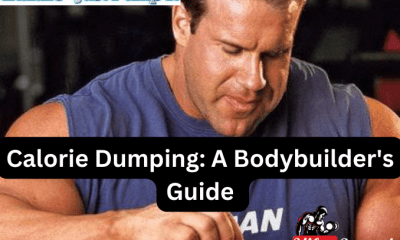
 Bodybuilding4 months ago
Bodybuilding4 months agoCalorie Dumping: A Bodybuilder’s Guide



